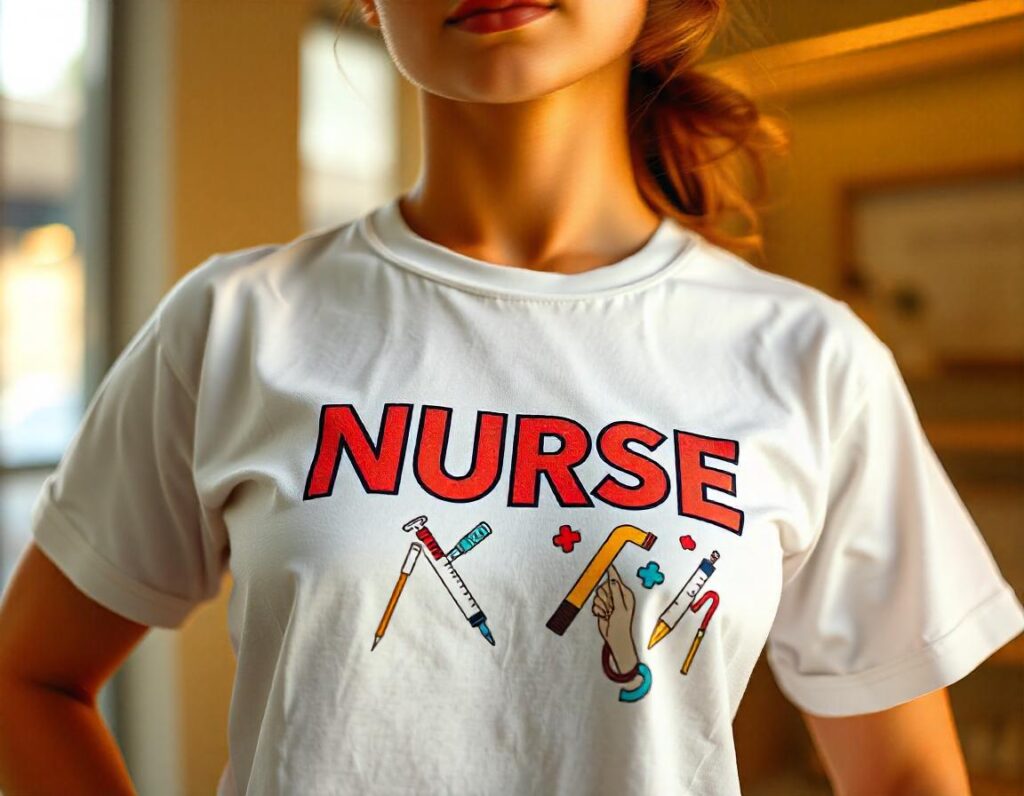In the dynamic realm of custom apparel and textile printing, DTF transfers are carving a niche for themselves as a game-changing technology. Standing for Direct to Film printing, this innovative method transforms the way designs are applied to various fabrics, offering vibrant results that rival traditional techniques like screen printing and DTG printing. Unlike conventional methods that often limit design possibilities, DTF transfers allow for intricate detail and color, making them ideal for high-quality custom prints. As print businesses look for efficient, versatile, and sustainable solutions, the rise of DTF transfers is reshaping the landscape of fabric printing. Join us as we explore the extensive potential and advantages that DTF transfers offer, and how they can elevate your business in the textile industry.
When discussing textile printing innovations, one cannot overlook direct transfer methods, prominently featured through DTF technology. Often referred to as Direct to Film application, this printing style has become a popular choice among businesses looking to create custom designs on apparel. The versatility of this technique allows it to thrive alongside other well-known printing methods such as direct-to-garment (DTG) and screen printing, making it an essential topic for anyone invested in high-quality fabric solutions. Embracing a diverse range of materials, DTF transfers represent the latest advancement in personalized textile production. As we delve deeper into this subject, it becomes clear how it stands out within the broader context of modern printing technologies.
Understanding DTF Transfers and Their Impact on Textile Printing
DTF transfers, or Direct to Film transfers, represent a revolutionary method in the textile printing industry. By offering a distinct advantage over traditional methods like screen printing and DTG printing, DTF has quickly become favored among printers and businesses alike. The process involves printing a design onto a specialized film, which can effectively capture intricate details and vibrant colors. Once heat is applied, the design adheres seamlessly to various fabric types, ensuring a high-quality finish that resonates with customers.
The impact of DTF transfers extends beyond aesthetics. This innovation allows for increased customization in custom apparel, catering to a broader audience with diverse preferences. With the ability to print on a variety of materials, including cotton, polyester, and blends, DTF transfers can accommodate everything from fashion apparel to promotional products. This versatility positions businesses to respond quickly to market trends, enhancing their competitive edge in the burgeoning textile printing landscape.
The DTF Printing Process Unveiled
The DTF printing process unfolds through several strategic steps that together create a seamless transition from design to finished product. Initially, designers create digital artwork tailored specifically for DTF printing, ensuring that every color and detail is accurately represented. This preparation is crucial, as it sets the foundation for the subsequent printing phase. Using eco-solvent inks, the film is printed, allowing for high-resolution images that make DTF an attractive choice when quality matters.
Once printed, an adhesive powder is applied, and the film is heat-cured to promote adhesion. This method is not only efficient but also minimizes waste, making it a more sustainable choice compared to traditional screen printing methods that often produce excess materials. Finally, the heat transfer process bonds the design to the fabric, resulting in long-lasting prints that can withstand multiple washes without fading—a crucial factor for businesses focused on custom apparel.
Advantages That Make DTF Transfers Stand Out
One of the standout features of DTF transfers is their remarkable versatility. Unlike screen printing, which often struggles with fabric compatibility, DTF can print seamlessly across a diverse range of materials, including cotton, polyester, and even blends. This adaptability means that businesses can expand their product offerings, providing customers with a variety of options for custom apparel and promotional items. Whether creating light or dark garments, DTF transfers provide high-quality results every time.
Moreover, DTF printing excels in efficiency and turnaround time. This technology allows for rapid production, making it possible for printers to fulfill both high-volume orders and unique custom requests without the extensive setup times associated with other methods. As a result, businesses can meet the rising consumer demand for personalized products quickly, enhancing customer satisfaction and ensuring a competitive advantage in the marketplace.
Exploring Trends in the DTF Transfers Market
The DTF transfers market has witnessed significant growth as consumer preferences shift towards custom apparel and personalized merchandise. This trend is driven by an increasing demand for unique products, prompting businesses to adopt DTF technology. This is particularly advantageous for small startups, as DTF allows for on-demand printing, which reduces the need for large inventory investments that can burden cash flow.
Furthermore, research predicts that the market for DTF transfers will continue to expand, driven by the fashion industry’s growing inclination toward customization. Brands are increasingly adopting DTF technology not only for its efficiency but also for its ability to deliver high-quality prints that can compete with established methods like screen printing and DTG. As this market evolves, businesses leveraging DTF technology will be well-positioned to capture their share of the lucrative custom apparel sector.
Comparative Insights Between DTF, DTG, and Screen Printing
When it comes to choosing the right printing method, understanding the differences between DTF, DTG, and screen printing can guide businesses in making informed decisions. DTF transfer printing generally requires a lower initial setup than traditional screen printing, which involves creating individual screens for each design. In contrast, DTG printing can be costly due to requirements surrounding specialized equipment. This makes DTF an appealing option for those just starting in custom print services.
Moreover, the fabric compatibility of DTF printing surpasses that of DTG, which primarily focuses on cotton fabrics. DTF’s ability to work with diverse materials enhances its usability in various applications—from fashion to promotional merchandise—making it a versatile choice for businesses aiming to offer expansive product variations. Additionally, the print quality and durability of DTF are often regarded as superior, featuring vibrant colors that are resistant to wear and tear.
Future Innovations in DTF Technology
As technology advances, the future of DTF printing holds promise for even greater enhancements in productivity and quality. Research and development efforts focus on creating new ink formulations tailored for DTF applications, aiming to improve both vibrancy and durability of the prints. The continual evolution of printing technology means customers will benefit from broader options in customization, leading to more engaging and creative product offerings.
Furthermore, advancements in printing speeds will enable businesses to fulfill orders more rapidly, particularly catering to the trend of on-demand printing. As more companies invest in DTF technology, the potential for expansion in product lines will be significant. By staying ahead in this rapidly evolving landscape, businesses can forge strong customer relationships, marked by high-quality, personalized printing solutions that meet modern needs.
Frequently Asked Questions
What are DTF transfers and how do they work?
DTF transfers, or Direct to Film transfers, utilize a specialized film to print vibrant designs that can be easily adhered to various fabrics using heat. The process involves creating a digital design, printing it on the film with eco-solvent inks, applying an adhesive powder, and then transferring the design to the fabric with a heat press.
How do DTF transfers compare to DTG printing?
DTF transfers offer greater versatility than DTG printing, as they can print on a wider range of fabrics, including synthetics and blends. While DTG primarily works well with cotton, DTF provides high-quality, vibrant prints on multiple materials, making it suitable for diverse custom apparel needs.
What advantages do DTF transfers provide over screen printing?
DTF transfers have several advantages over screen printing, including lower setup costs, a broader range of fabric compatibility, and the ability to handle smaller batch orders efficiently. Additionally, DTF prints often feature superior vibrancy and detail compared to traditional screen prints.
Can DTF transfers be used for all types of fabrics?
Yes, DTF transfers are exceptionally versatile and can be used on various fabric types, such as cotton, polyester, blends, and more. This flexibility makes them an ideal choice for creating custom apparel on different textile materials.
What is the sustainability factor of DTF transfers compared to other printing methods?
DTF transfers generate less waste compared to methods like screen printing, contributing to more eco-friendly production processes. This efficiency, along with the ability to accommodate on-demand printing, aligns well with sustainable manufacturing practices in the custom apparel industry.
What trends are shaping the future of DTF transfers in the custom apparel market?
The DTF transfers market is expanding rapidly due to the growing demand for personalized products and custom apparel. Trends indicate a rise in small batch and on-demand printing capabilities, enabling businesses to reduce inventory costs and enhance customer satisfaction with tailored services.
| Key Point | Description |
|---|---|
| What are DTF Transfers? | DTF transfers utilize a special film as a medium for printing designs onto textiles, using heat and adhesive to ensure a vibrant, long-lasting finish. |
| The DTF Printing Process | 1. Design Preparation 2. Film Printing 3. Adhesive Application 4. Heat Curing 5. Transfer to Fabric |
| Advantages of DTF Transfers | Versatility, quality, efficiency, and sustainability make DTF printing an attractive choice for customized apparel. |
| Trends in the DTF Transfers Market | Increasing demand for custom apparel drives market growth, with businesses adopting DTF technology for its ability to cater to personalized orders. |
| Comparative Analysis | DTF transfers are more versatile than DTG and involve less setup cost than screen printing while providing high-quality prints. |
| Future Prospects of DTF Technology | Future innovations will improve printing speeds and product durability, enhancing color vibrancy and options for customization. |
Summary
DTF transfers revolutionize the printing industry with their innovative approach and versatility, offering businesses significant advantages in creating custom apparel. With their ability to produce high-quality prints on various fabrics, DTF transfers position themselves at the forefront of textile printing technology. As the market evolves, embracing DTF transfers will allow you to tap into growing consumer demands for personalized products, ensuring you stay competitive. This unique printing method not only meets quality standards but also aligns with sustainability trends, making it a smart choice for modern printing solutions.



